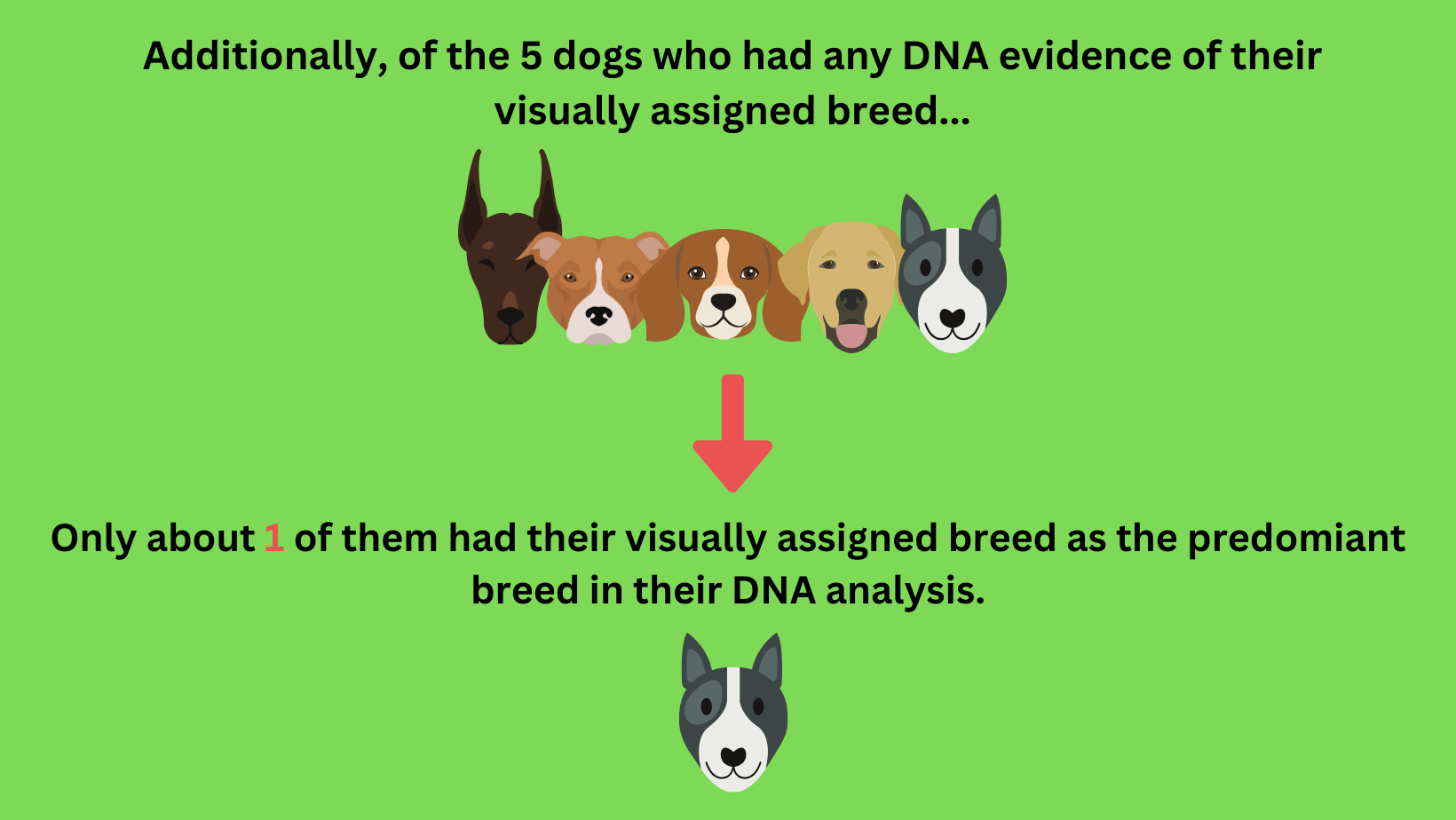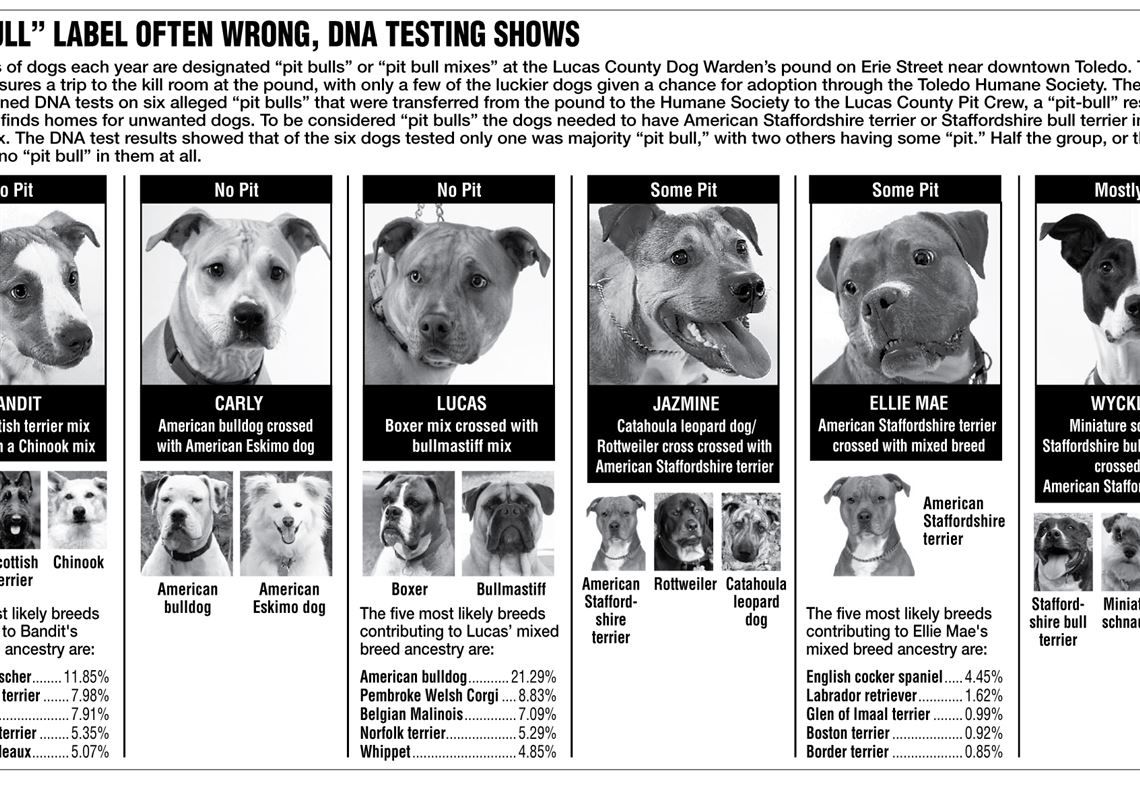Pit Bulls Are One of the Most Misidentified Breeds

Breed-specific legislation that bans specific types of breeds has been implemented in over one-thousand cities in the United States (1), and most of these breed-specific bans are broadly applied to dogs that are recognizable as a “pit bull” based on their physical appearance (3). Multiple research studies have demonstrated the difficulty of discerning dogs based on appearance alone. Even those very familiar with dog breeds, such as veterinarians and shelter staff, cannot accurately determine the breed of many dogs based solely on their physical characteristics (1).
When animals arrive at a shelter, they are often hastily labeled and then marked for adoption. When deciding the breed of dogs, this identification process is often based on appearance; however, due to extensive crossbreeding, approximately 75% of dogs at shelters are incorrectly labeled as “pit bulls”. Today, pit bulls remain one of the most commonly misidentified breeds (4).


A 2009 study by Dr. Voith examined the validity of the labels given through visual identification (2). The study consisted of twenty mixed-breed dogs who had been given a label that stated what their predominant breeds were thought to be. They compared the labels these dogs were given through visual identification against DNA identification. The results showed little agreement between the visually identified breed and the actual breed as given by DNA analysis. Of the sixteen dogs that had been assigned a specific breed at the shelter, the DNA analysis showed that only about 30% of the dogs showed any DNA evidence of the breed they were assigned by visual identification, and over 90% of the dogs did not have their visually identified breeds as the predominant breed in their DNA analysis (2).
The lack of reliability of visual identification has had a detrimental impact on the reputation of pit bull-type dogs. In many cases, pit bull aggression data is derived from news sources that relied on visual identification as the means of identifying the dog in the attack. If professionals are prone to applying incorrect visual labels to dogs, then why would the visual identification given by a neighbor that witnessed the attack be any more reliable? The only effective way to definitely determine a dog’s breed makeup is through genetic testing. Without science-backed evidence to support pit bull aggression data, rather than data that is based on visual identification information, one must question that data that is being presented.

This writing is an excerpt from my previous paper "Get That Pit Bull Away from Me!": How Data Collection, Visual Identification, and the Media Created a Neighborhood Monster
Sources
- https://content.naic.org/cipr-topics/breed-specific-legislation#:~:text=Issue%3A%20Breed%2Dspecific%20legislation%20(,about%20dog %20breeds%20and%20aggression.
- https://nationalcanineresearchcouncil.com/visual-breed-identification/
- https://law.lclark.edu/live/files/32171-25-1-third-articlepdf
- https://worldanimalfoundation.org/dogs/pitbull-statistics/
